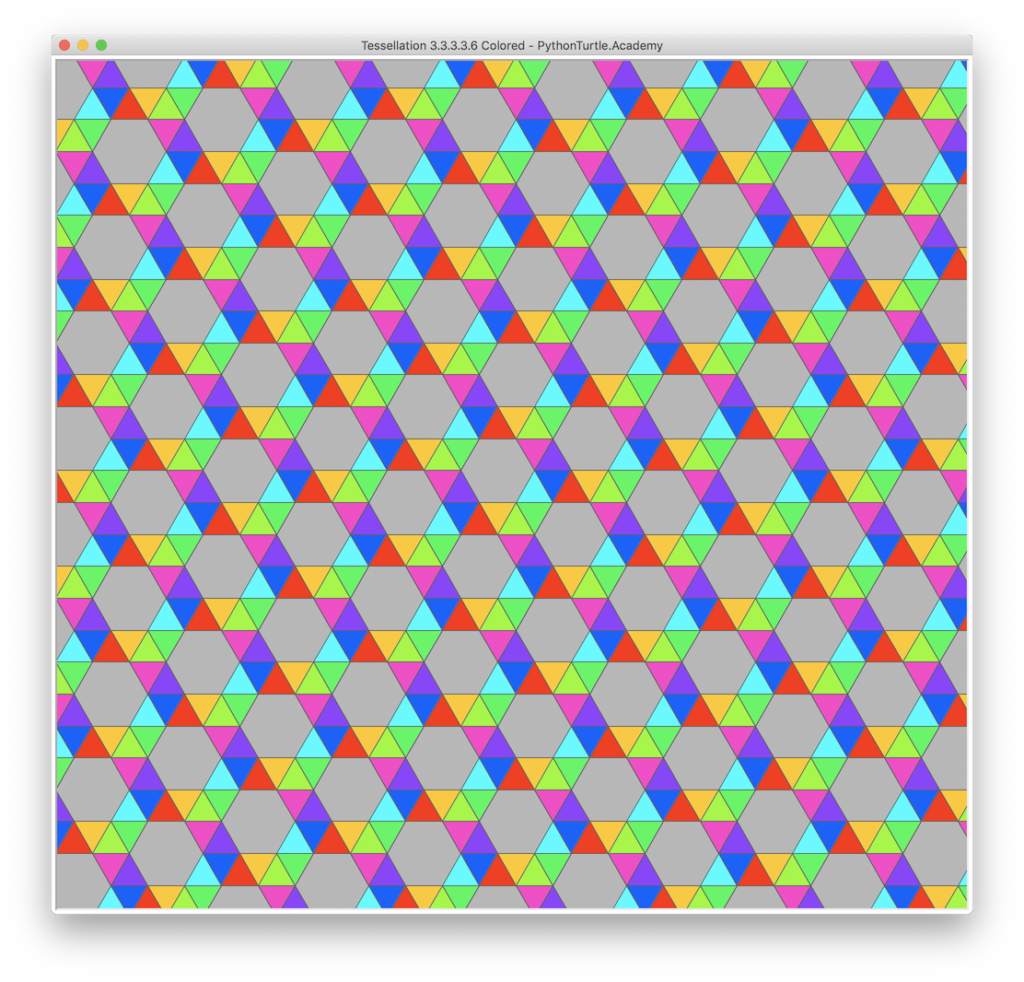

If you want to see the applet work, visit Sun's website at, download and install Java VM and enjoy the applet. A semi-regular tessellation is uniform but not regular. There are eight semi-regular tessellations: 3.6.3. Each node is surrounded by the types of polygons that make up the tessellation, always in the same order, and the edge condition is completely shared with the neighbor. This applet requires Sun's Java VM 2 which your browser may perceive as a popup. Not all arrangements of regular polygons create semi-regular tessellations. Semi-regular or Archimedean tessellations consist of two or more types of regular polygons.

SEMI REGULAR TESSELLATION FREE
For example, a less regular tessellation is obtained when the rhombi are free to become parallelograms. It is possible to further relax the original constraints.

As a result, it is easily morphs into a derivative of a 4, 4, 4, 4 tessellation. A semi-regular tessellation is a tessellation made up of a variety of different polygons. The one below lets loose the equilateral triangles. Accordingly, there are two implementations. Here, all the shapes are still regular polygons, but one may use more than one type of regular polygon. We may only preserve either the squares or the equilateral triangles, but not both. After sharing some students' work, tell them this particular tessellation is called semi-regular tessellations. A semi-regular tessellation is made up of two or more regular polygons that are arranged the same at every vertex, which is just a fancy math name for a corner. This is the third of the three hinged tessellations that sets loose. There are two ways to set this tessellation on hinges. The applet implements a hinged realization of Steinhaus semi-regular plane tesselation 82. In particular this is what makes it semi-regular: a semi-regular tessellation combines more than one kind of regular polygons, but the same arrangement at every vertex. The tessellation itself is identified as (4, 3, 3, 4, 3) because 5 regular polygons meet at every vertex: a square, followed by two equilateral triangles, followed by a square and then again by an equilateral triangle. A tessellation or a tiling is a way to cover a floor with shapes so that there is no overlapping or gaps. This arrangement identifies the tessellation. With both regular and semi-regular tessellations, the arrangement of polygons around every vertex point must be identical. Figure 6 shows a semi-regular tessellation made up of hexagons and squares. The applet implements a hinged realization of one semi-regular plane tessellations. A regular tessellation is a design covering the plane made using 1 type of regular polygons. Semi-Regular Tessellation Semi regular tessellations use two or more regular polygons to create new patterns.


 0 kommentar(er)
0 kommentar(er)
